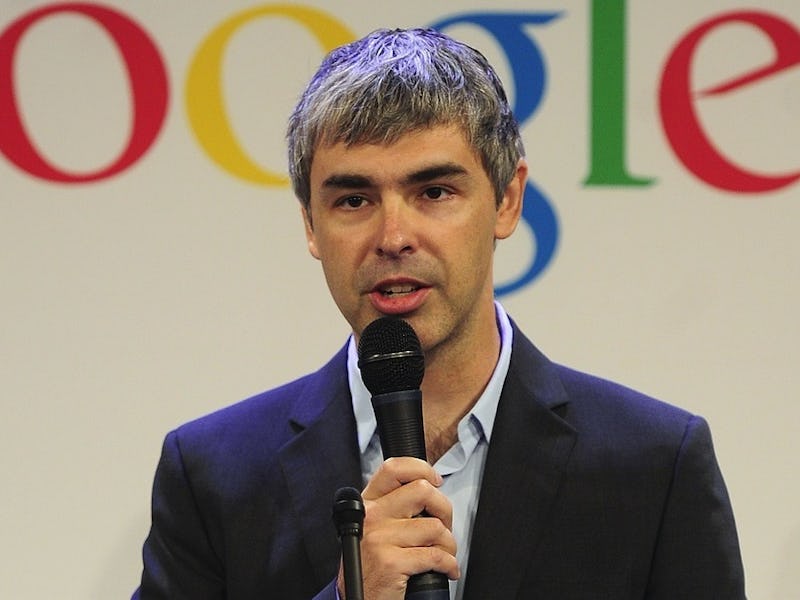Google's Larry Page Revealed as Secret Founder of Two Flying Car Startups
Zee.Aeros and Kitty Hawk are linked to the Google co-founder.

Since 2010, Larry Page, co-founder of Google, has founded two startups committed to developing a commercially viable flying car, Bloomberg News reports. Page began committing a piece of his fortune to Zee.Aero, a company conspicuously housed on the edge of Google’s Mountain View campus, in 2010, and Kitty Hawk, named for the town that hosted the first Wright brothers flight, in 2015. Employees at the two firms are entirely sequestered from one another, despite working barely a mile apart, in an attempt to encourage competition and innovative thinking. The two companies remain similarly secretive about their plans, and neither has released any products to market.
Page now becomes likely the most high-profile believer that the time for flying cars has officially arrived. Improvements in autonomous transportation and drone technology have convinced a growing segment of the technosphere that flying cars are a possibility, but many still consign the notion to the realm of dreams. Zee.Aero alone though employs over 150 people and is still hiring, suggesting it is either on to something or has an almost unlimited budget and negligible financial commitments. It should come as little surprise then that its president is Sebastian Thrun, the man credited with developing the secretive Google X research labs.
Zee. Aero filed a patent for this flying car in 2013 but only received approval this year.
Zee.Aero filed for a patent on what may be termed a flying car in 2013, but it only received formal approval this year. The vehicle has eight lifting propellers and two in the rear to generate thrust. One version would be able to fit in a conventional parking spot.
The Zee.Aero design would be able to fold up into a single parking spot.
Kitty Hawk has not released any diagrams or plans detailing its plans, so it’s not clear whether Page is banking entirely on the Zee.Aero design or if the company has developed some ideas in the past few years. Compared to the Ehang passenger-carrying drone, which just received FAA permission to begin flight testing, Zee.Aero’s design looks almost absurd, though of course it is aiming for a more complete aircraft that can travel longer distances.
How the revelation of Page’s identity will affect these companies almost remains unclear. Certainly, there is a little bit of prestige for the employees who have until now known of their anonymous funder as simply GUS, meaning “guy upstairs.” But they may also face increased pressure to succeed. Page has so far been able to secure years of harmonious working conditions free of the pressure of profit or production. Now, with his own reputation on the line, the founder may start pushing for results, which, in the end, may not be a bad thing for at least Zee.Aero, which has already taken three times as long to develop as Google itself.
And Zee.Aero and Kitty Hawk are hardly alone in the quest to build flying cars. The XTI Aircraft Company has developed the TriFan 600 and appears already further along in development than either of the Page endeavors. The enthusiasm for the next stage of transportation is certainly there, and it’s clear that even the money to make it happen has appeared on the scene. Now, with the brightest minds and the deepest pockets focused on flying cars, the only question that matter is: Will it ever happen?